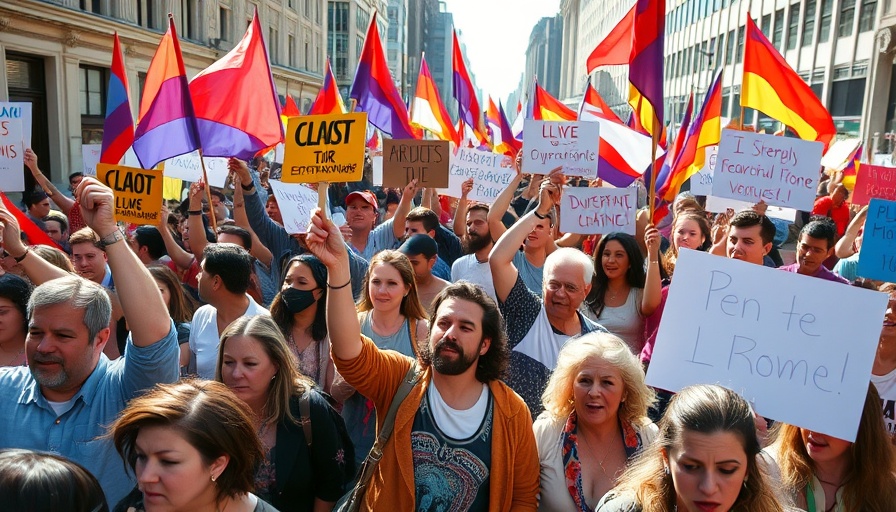
Unpacking the Texas Protests Against Immigration Enforcement
On a recent Sunday, hundreds of protesters took to the streets of Houston and San Antonio, raising their voices against the intensified operations of U.S. Immigration and Customs Enforcement (ICE) in Texas. These gatherings reflect a grassroots resistance to federal immigration policies, particularly under the directive of the Trump administration, which has promised a robust enforcement strategy targeting undocumented immigrants. The protests signify not just opposition to specific policies but a wider call for humane treatment within the immigration system.
The Context Behind the Protests
The demonstrations in Texas were inspired by similar unrest seen in California, where tensions flared between protesters and law enforcement as they decried aggressive immigration crackdowns. The situation escalated nationally as President Donald Trump deployed National Guard troops to Los Angeles in response to the protests, framing them as a necessary measure for public safety. This provocative action has polarized communities and ignited discussions surrounding the rights of immigrants and the role of government in enforcing immigration laws.
A Peaceful Yet Powerful Protest Movement
Despite the escalating tensions in California, the protests in Texas are reported to have remained largely peaceful. Attendees shared food, exchanged messages of solidarity, and marched toward Hermann Park in Houston. This environment demonstrated a community united in its opposition to perceived injustices. Participants of all backgrounds—young families, students, and activists—came together to express their concerns over workplace raids and the apprehension of immigrants at courthouses, highlighting a strategy that many believe targets the most vulnerable populations.
Understanding the New ICE Strategy
The ongoing protests come at a time when federal authorities are, according to many observers, pivoting their focus towards workplace raids and aggressive surveillance of immigrant communities. In recent weeks, raids have intensified, leading to arrests in places where families feel safe, such as courthouses and schools. This shift not only undermines public trust but also challenges the safety net that many immigrants rely upon to navigate their lives in the U.S.
The Broader Implications of Resistance
As advocacy and activism expand across the nation, these protests in Texas bring to light the larger socio-political landscape affecting immigrant rights. The passionate rhetoric from leaders such as Governor Greg Abbott—who labeled these protests as an “organized assault” on federal law enforcement—highlights the charged atmosphere around immigration policy. Abbott's statements suggest a zero-tolerance approach towards dissent, which could further divide communities and exacerbate fears among immigrant populations.
Future Outlook: Trends in Immigration Advocacy
The recent protests signal a resurgent movement among activists to fight against draconian immigration policies. As more citizens rally to support immigrant rights, it creates a foundation for sustained advocacy efforts aimed not only at policy change but also at fostering social cohesion across communities. In the coming months, it will be crucial to observe whether this grassroots momentum translates into larger political shifts, especially in Texas—a state with a significant immigrant population.
The Emotional Underpinnings of Activism
For many involved in these protests, there is a deep emotional investment rooted in personal stories of hardship, resilience, and the quest for justice. Activists often describe their experiences with family separation, the fear of deportation, and the trauma inflicted by uncertain immigration status. These sentiments fuel a collective determination to advocate for reform and to seek dignity for all individuals, regardless of their immigration status.
In conclusion, the protests in Houston and San Antonio are not isolated events but part of a larger narrative pushing back against the criminalization of immigrant communities. It is an ongoing struggle that calls for empathy, understanding, and action from fellow citizens. As activists and community members raise their voices in opposition, they pave the way for future dialogues on human rights, equity, and cultural inclusion.
To be a part of this critical movement, engage in local advocacy, educate others about immigration issues, and consider joining organizations that support immigrant rights. Together, we can work toward a more just society for everyone.
 Add Element
Add Element  Add Row
Add Row 



Write A Comment